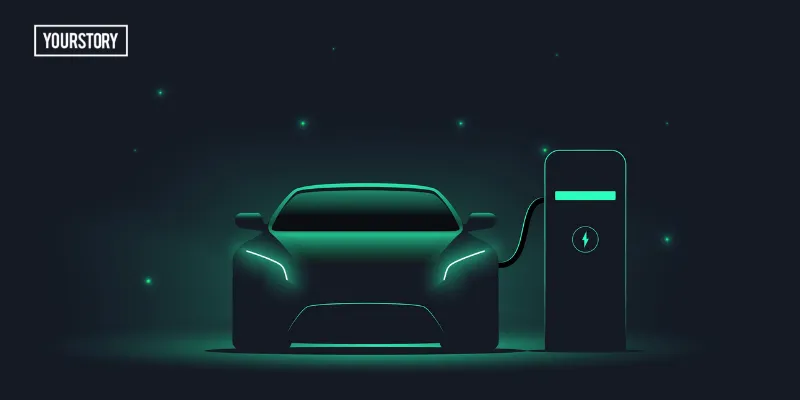Why technology is key to safe commercial electric journeys
Ongoing investments, research and development efforts, and collaborations within the automotive industry can unleash safer and more efficient electric mobility solutions for the nation's benefit.
The commercial electric vehicle (EV) sector in India is witnessing rapid growth, driven by favourable government incentives, ecommerce expansion, and the need for sustainable transportation. Ecommerce companies are increasingly adopting electric vehicles for last-mile deliveries to reduce emissions and costs. Many cities are also transitioning their public transportation fleets to electric alternatives to provide cleaner commuting options.
The government, in this context, has been actively promoting EVs through financial incentives and tax benefits. The progress in the expansion of charging infrastructure across highways and cities is also quite visible and supports this shift. Moreover, various automakers and technology companies are investing in R&D and developing strategic synergies to boost innovation in the commercial EV space.
While there is a narrative of economic growth and increased mobility, it also casts a shadow in the form of increased road accidents. It’s a sobering reality that we cannot afford to overlook.
According to government statistics, more than 150,000 lives were tragically lost in road accidents across India in 2021—the highest since 2014. A startling fact to consider is that commercial vehicles, which constitute a mere 2% of the total vehicular population, were involved in over 11% of these fatal accidents.
The primary cause of most accidents is overspeeding, contributing to 72.3% of total road accidents, 71.2% of total deaths, and 72.8% of total injuries in 2022. Additionally, accidents involving being 'Hit from Back' hold the highest share in total accident deaths at 19.5%, followed by 'Hit and Run' and 'Head on Collision,' accounting for 18.1% and 15.7% of deaths, respectively. The absence of sufficient safety features in commercial vehicles further exacerbates the impact of these incidents.
This is where new-age automakers come into play. To improve road safety and prevent fatalities, commercial EV manufacturers are introducing various advanced driver assistance and connected vehicle technologies:

Driver safety
Advanced driver assistance systems (ADAS) in commercial electric vehicles are equipped with cutting-edge technologies to enhance driver safety. Collision warning systems can detect potential crash risks early and alert the driver, while automatic emergency braking can automatically activate brakes to avoid frontal crashes. Lane keep assist system warns drivers of unintentional lane departures and can even steer back into the lane. Together, these ADAS features significantly reduce the risk of accidents caused by driver errors, inattention or delayed reaction times.
Additionally, driver fatigue and distraction monitoring systems utilise infrared cameras and computer vision algorithms to keep commercial vehicle drivers alert. If signs of drowsiness or distraction are detected, the system can trigger audio-visual warnings to notify the driver. Some systems also monitor driving performance metrics to identify changes indicating fatigue. These interventions can prevent the major risk of crashes due to distracted or drowsy truck and bus drivers.
Advanced telematics platforms allow fleet managers to monitor critical insights on driver behaviour and risks in real-time. Harsh braking, acceleration and cornering data help identify unsafe manoeuvres or traffic violations. Location tracking enables verification of stoppage times and route deviations. Such data analytics enables fleet companies to coach drivers on improving safety.
Vehicle safety
Electric commercial vehicle manufacturers are enhancing intrinsic vehicle safety via advanced dynamics technologies. For instance, torque vectoring optimally varies torque to each wheel enhancing stability during high-speed cornering or sudden steering inputs. Electronic traction control automatically brakes slipping wheels to avoid skidding on slippery surfaces. These features help maintain control during intense braking or turning, even in challenging conditions.
Surround view camera systems provide drivers a 360-degree view around the vehicle which helps overcome blind spots and improves all-round visibility. This allows safer manoeuvring in confined spaces and avoids collisions with nearby pedestrians or objects. Additionally, automated headlamps, wipers and defoggers enable safe driving under poor visibility conditions due to fog, rain or humidity without driver intervention.
Road safety
Leveraging V2X (vehicle-to-everything) connectivity, commercial electric vehicles can now exchange vital information with other vehicles, road infrastructure and cloud platforms to enhance road safety. For instance, warning messages about black ice, wrong-way drivers or road accidents ahead received via V2X allow drivers to take preventive action.
Likewise, over-the-air updates about nearby signal light timings help vehicles optimise speeds and avoid red light violations through eco-friendly driving. Such collective intelligence minimises risks and prevents collisions. Additionally, curve speed warnings and oversized vehicle alerts are also delivered via cloud integration to warn drivers in advance even when the road terrain is not physically visible due to turns. As India expedites its connected vehicle infrastructure, such technologies in commercial electric vehicles will be pivotal in achieving the goal of zero road fatalities.
(Rohan Shravan is the founding CEO/CTO of Tresa Motors, an OEM manufacturer of medium and heavy electric trucks.)
Edited by Kanishk Singh
(Disclaimer: The views and opinions expressed in this article are those of the author and do not necessarily reflect the views of YourStory.)








